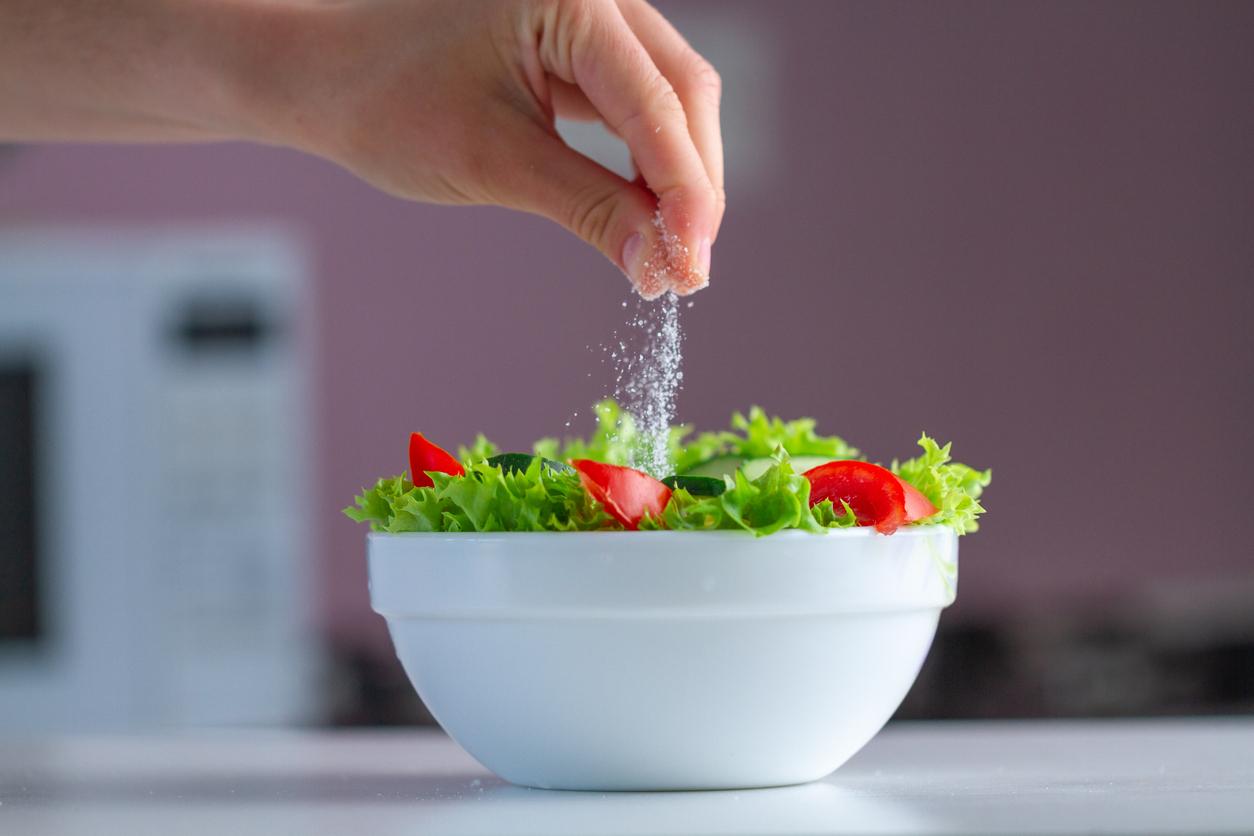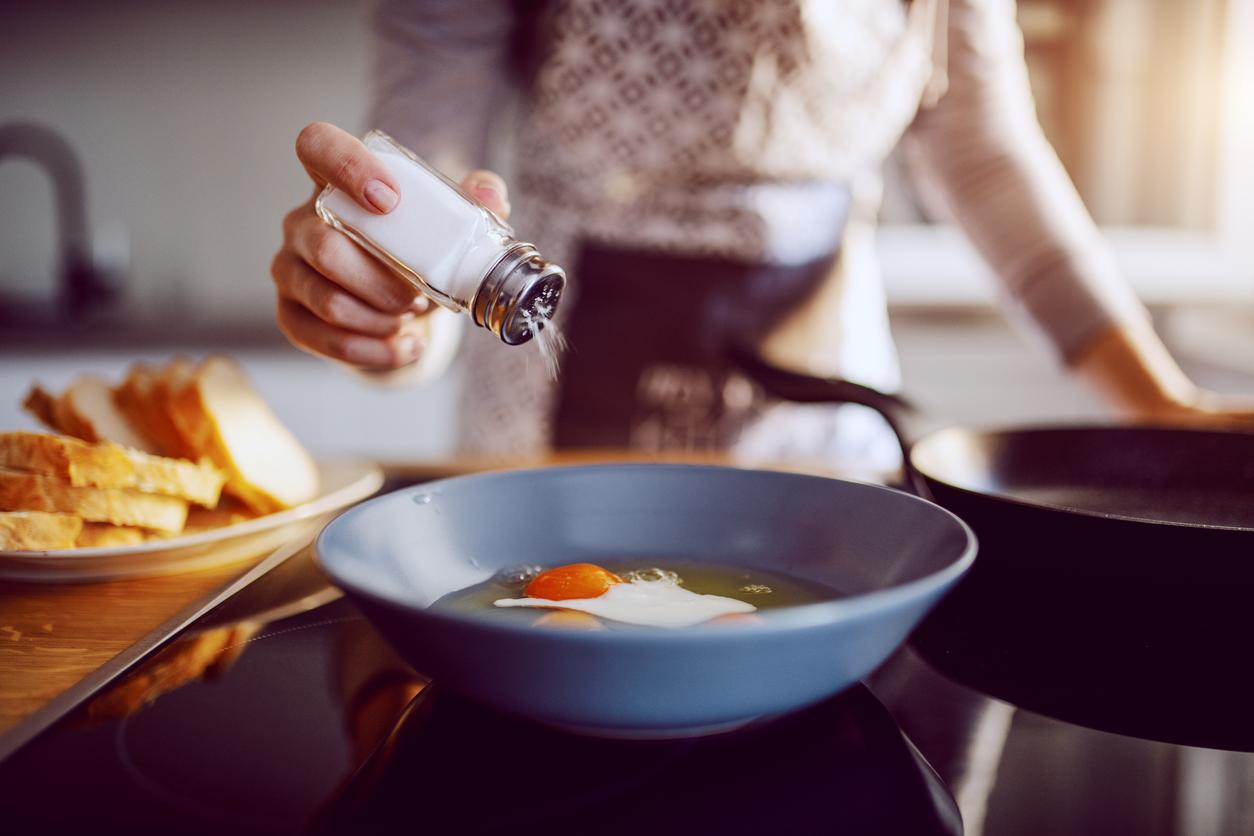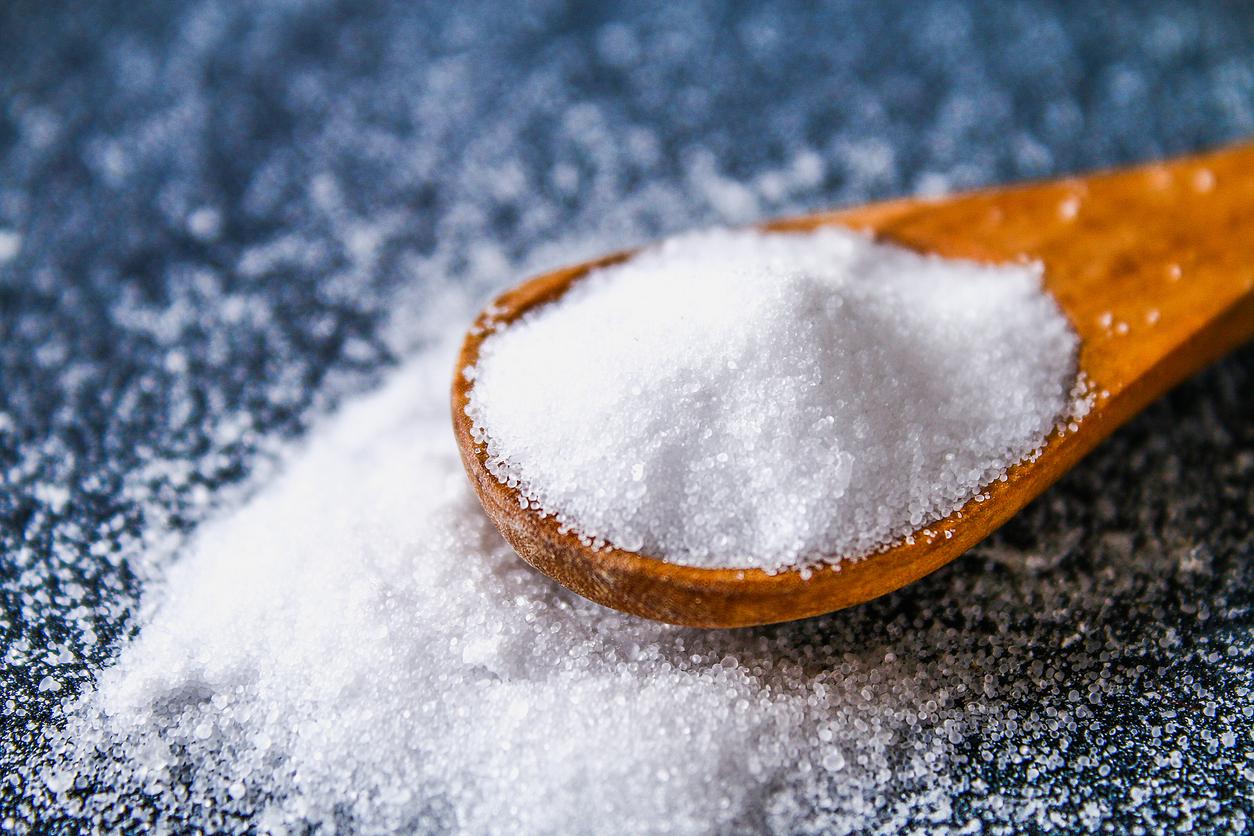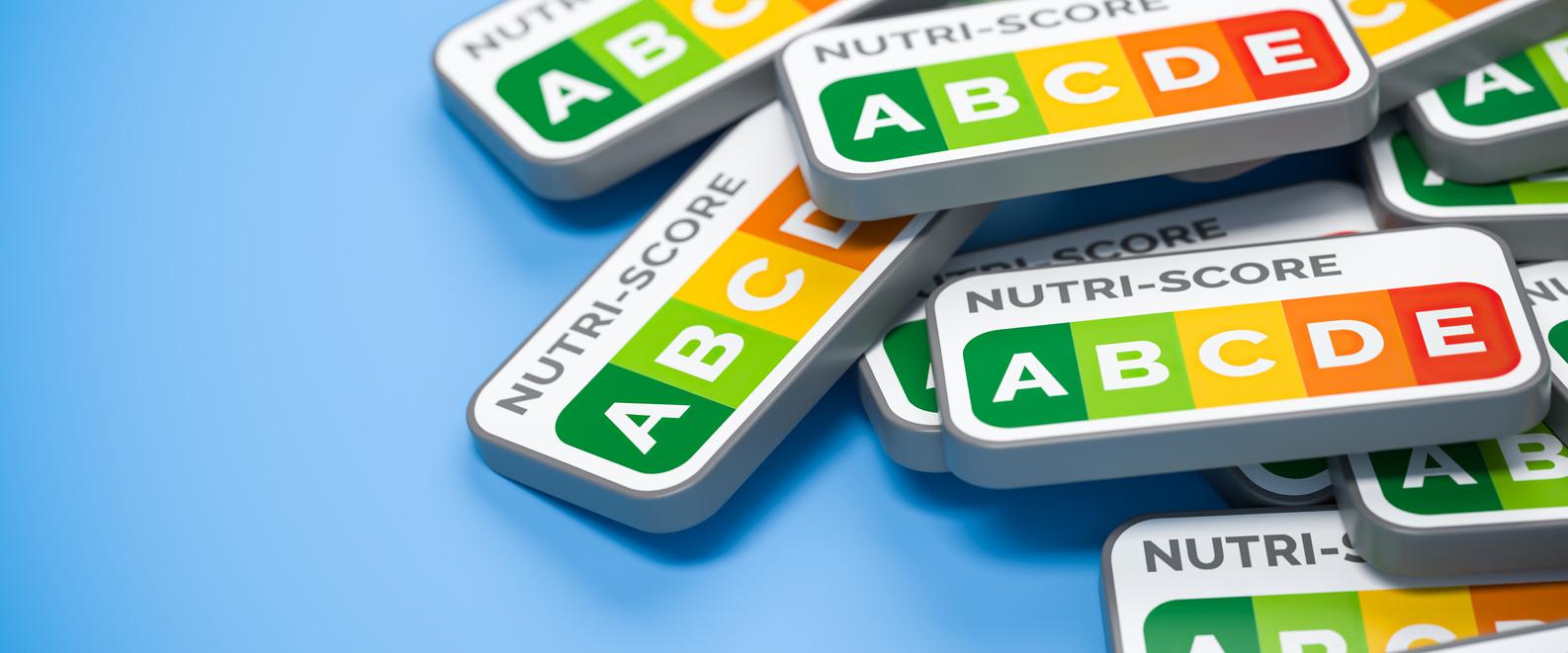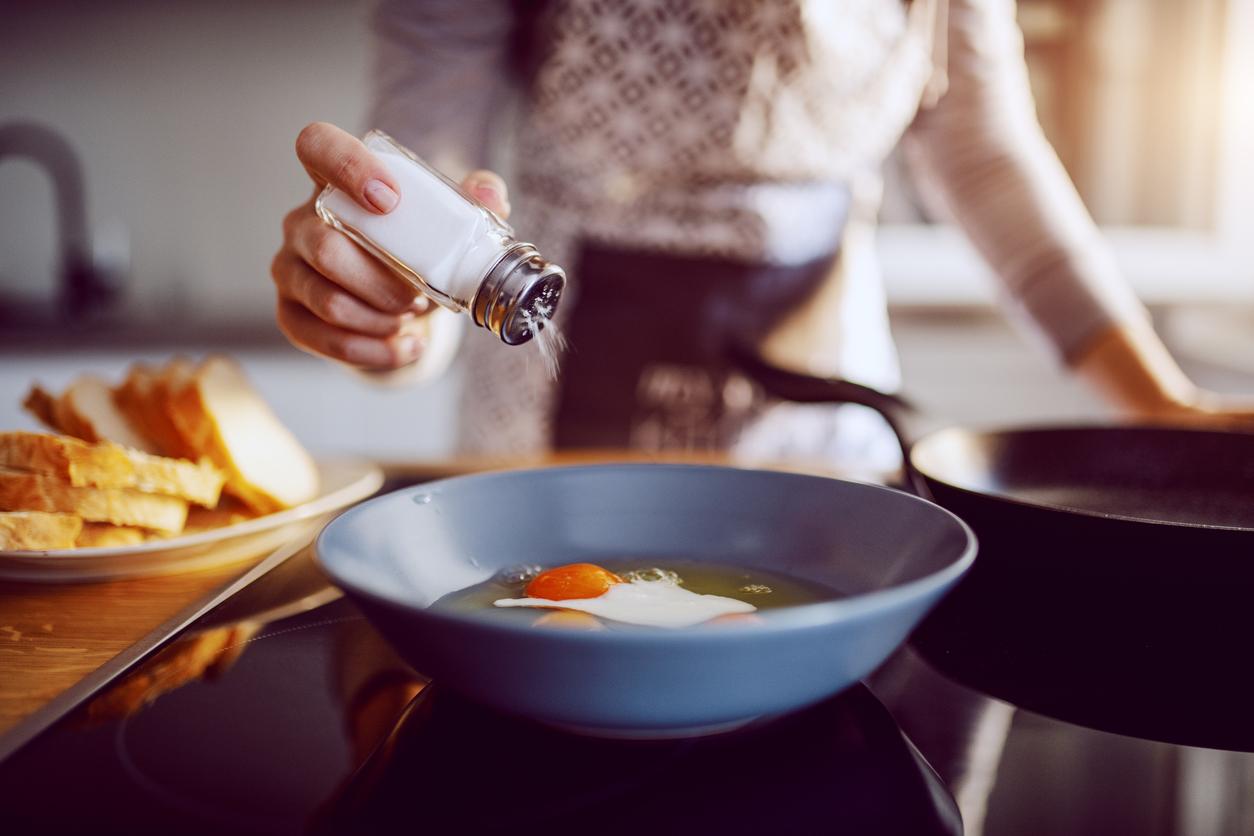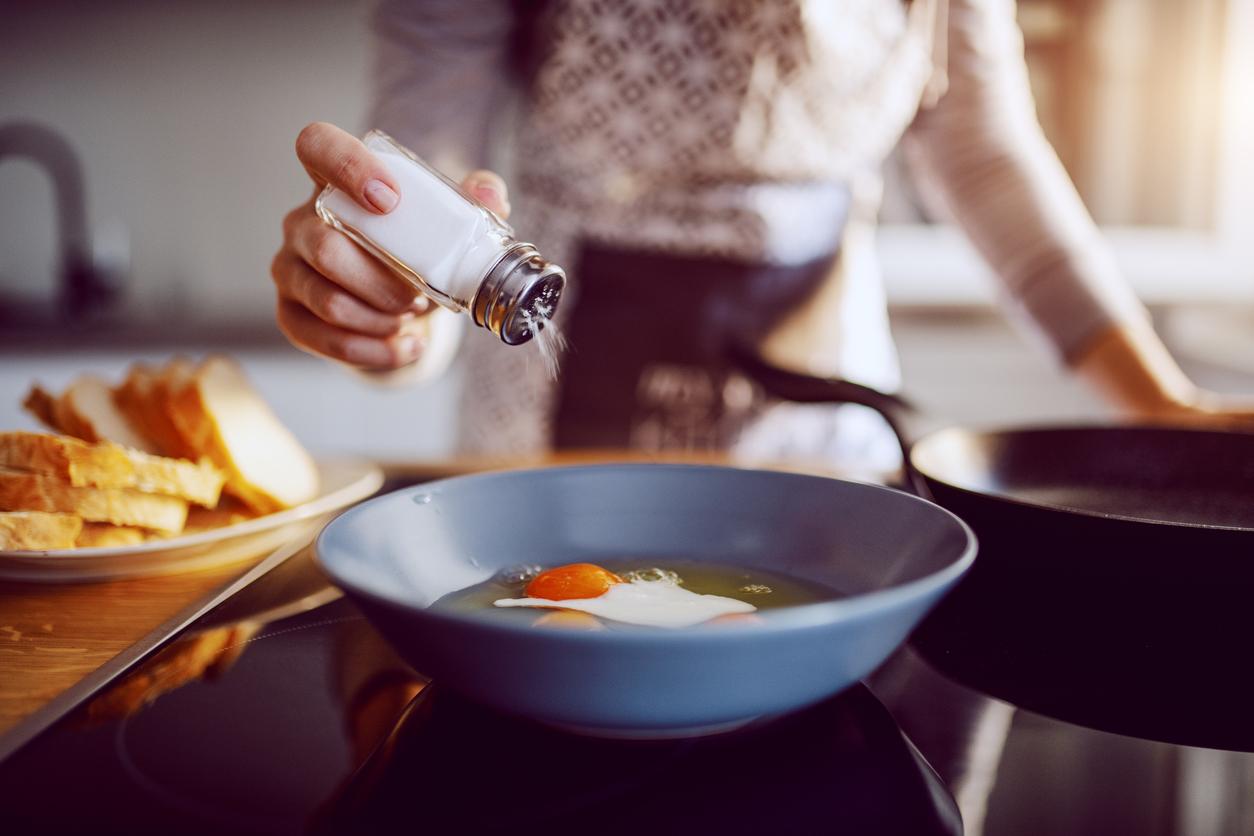Salt is made up of 2 elements, chlorine (60%) and sodium (40%). It’s the sodium contained in salt which has an important role for the functioning of the body : good distribution of water in the body, regulation of pressure and blood volume, good functioning of the muscles and the heart, routing of nerve impulses.
On the other hand, a excessive salt consumption promoteshigh blood pressure, itself the cause of cardiovascular disease. Too much salt consumption also aggravates certain health problems such as Water retention or theosteoporosis.
And we eat too much! We consume on average every day 8 to 9 g of salt. The National Health Nutrition Plan recommends not to exceed the consumption of 5 g of salt per day (i.e. 2 g of sodium). To know : 1 g of sodium equals 2.5 g of salt! Thus, to find out the salt content of a product, multiply the sodium figure by 2.5.
About 80% of the salt consumed is in food, that is salt says hidden, compared to the visible salt we add (which represents only 20% of our salt consumption). Often present to preserve food, salt is also used as a flavor enhancer in many food preparations.
Which foods are highest in salt? Charcuteries, aperitif biscuits, pastries, cheeses, sauces and condiments, preserves, ready meals including soups… Did you know that a croissant brings 1g of salt, i.e. 1/5 of the recommendations, a portion of industrial soup 2, i. 5g of salt, almost half of the recommended salt intake per day?
Sources:
- Laurence Plumey, Sugar, fat and salt, Editions Eyrolles, 2017
- Nathalie Majcher, 1 month to reduce salt, Editions Hachette, 2020
- Table of nutritional composition of foodsHandles





















